Talking about a (R)Evolution?
What roles broadcast and broadband will truly play for the media industry and viewers in the future
Translation: Revolution or Evolution? Will the distribution and consumption of television soon be completely „online“? What strategies are content providers, platforms, and manufacturers pursuing? What role do new technologies and standards play – and what do viewers actually want?
We explored these questions as part of the 6th edition of our popular event series, the Media Innovation Platform. Under the title „Talking about a (R)Evolution? The Real Role of Broadcast and Broadband for the Media Industry and Viewers,“ distinguished industry representatives and experts discussed the transformation of media distribution from broadcast to broadband in all its facets along the entire value chain. The „MIP#6“ was also available for a hands-on experience in a dedicated exhibition and demo area.
We have captured the event for you in a compact and informative manner, including text, images, and videos, along with a photo gallery – and we are already looking forward to the seventh edition of the Media Innovation Platform!
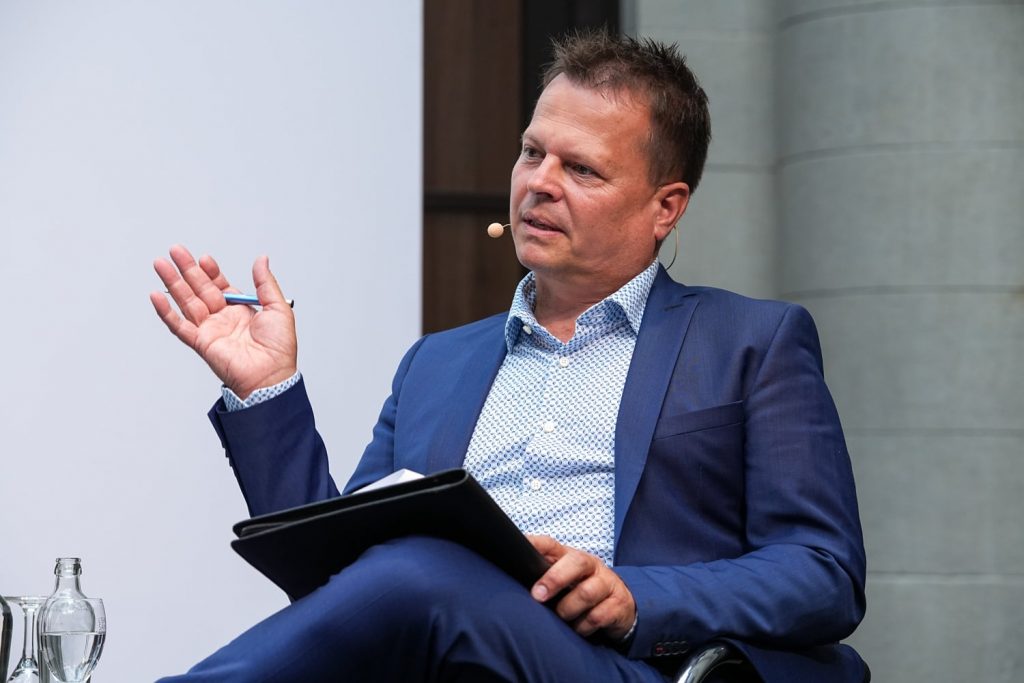
„We have seen that we are operating in a growing market that is continuously moving towards IP in terms of both the usage and distribution of audiovisual content. Broadcast and broadband will coexist for many years, but in the long run, the trend is towards ‚All-IP.‘ However, the development of appropriate technologies is still necessary to truly transmit the entire TV usage over the internet. This is an extremely exciting development for the entire industry, and Deutsche TV-Plattform is the ideal forum for all market participants to discuss the associated questions and challenges and shape the future of TV distribution.“
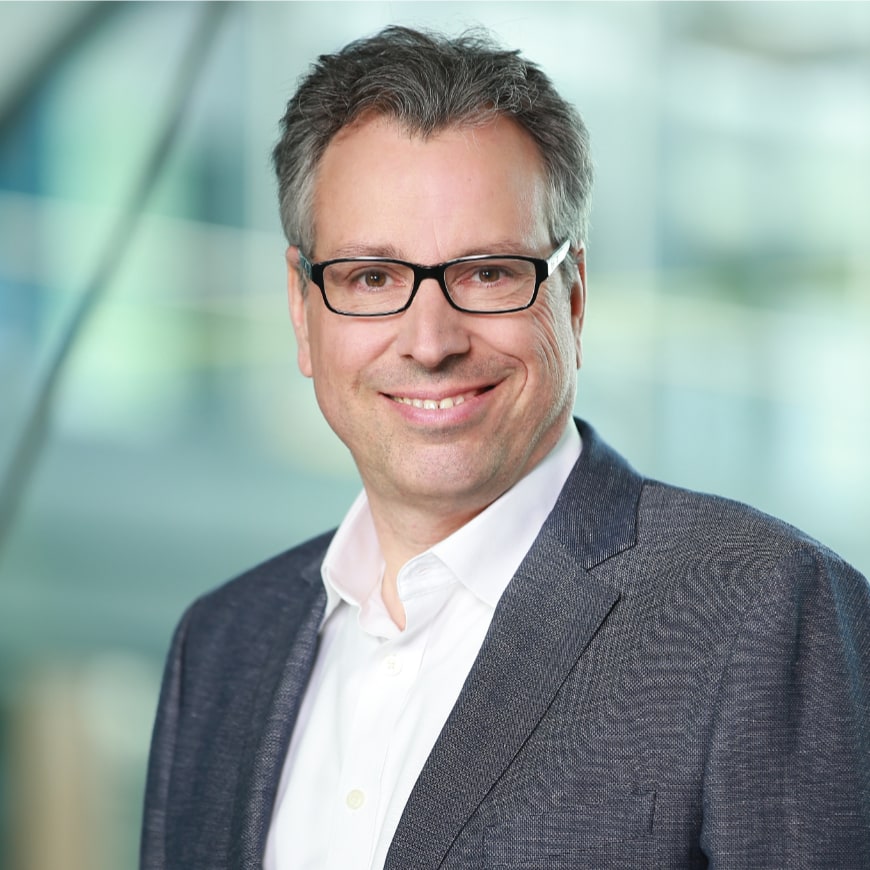
Andre Prahl (RTL Deutschland) CEO of Deutsche TV-Plattform
Prof. Dr. Mike Friedrichsen - Key Note
The Collaborative Future: The Role of Broadcast and Broadband in the Media Industry and for the Audience
„Viewers are now more active, demanding, and flexible in how they consume content,“ said Prof. Mike Friedrichsen from the University of Digital Science in Potsdam, Brandenburg, during his keynote address. The modern TV experience is characterized by time-shifted viewing, binge-watching, multi-tasking, interactive formats, and social television. The television industry must adapt to these changes and leverage new technologies to offer viewers a broader and more diverse range of content.
The future of the media industry and viewer behavior lies in the combination of broadcast and broadband. While broadcast enables content distribution on a wide scale, broadband offers personalized, interactive, and immersive experiences. The convergence of these two transmission methods opens up new possibilities for the media industry to create a diverse and engaging offering. It involves a collaborative usage where broadcast and broadband complement each other, creating a dynamic and interactive media landscape. The future of television lies in a hybrid landscape where broadcast and internet streaming coexist, providing viewers with a variety of options.
Personalization, on-demand access, high quality, interactivity, original content, and user-friendliness are just some of the aspects that viewers will focus on. TV platforms must, therefore, be innovative and continuously evolve to meet these expectations. The future of linear media consumption lies in interaction, the social component, and the integration of new technologies. The media industry must adapt to these changes and find innovative ways to offer relevant content and keep up with the evolving needs of viewers.
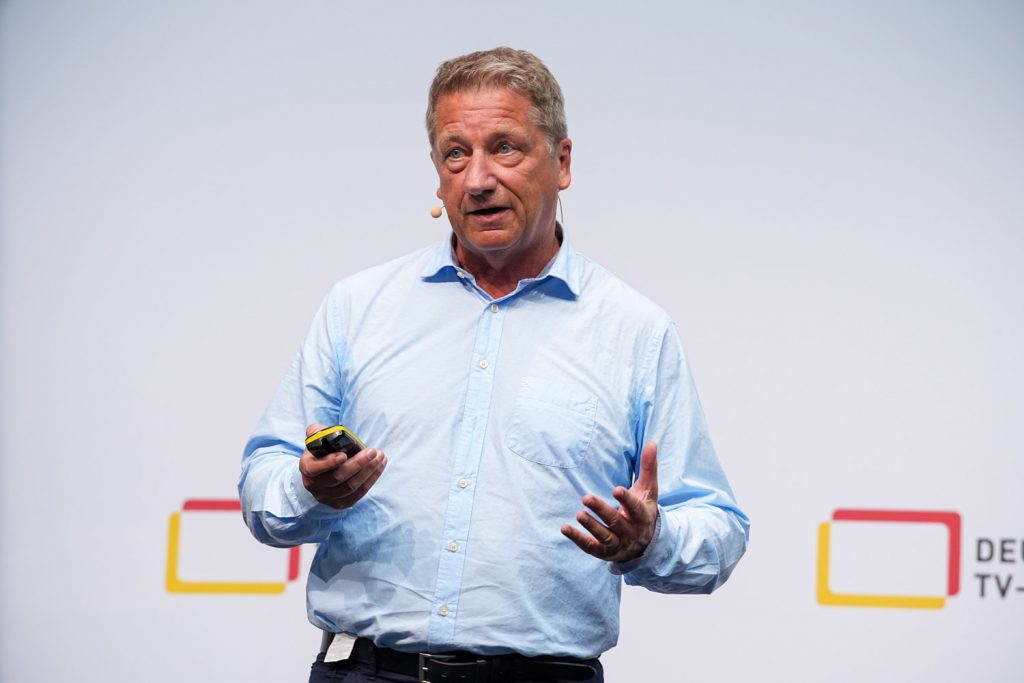
Prof. Dr. Mike Friedrichsen,
University of Digital Science, Potsdam, Brandenburg
„The industry must respond more quickly to technological developments and the changing habits of viewers. I believe that broadcast and broadband will coexist in the future, but the audience’s needs are moving towards IP. The industry has understood this. Now, these innovation processes need to be driven forward to merge broadcast and broadband. This can lead to interesting business models and ideas.“
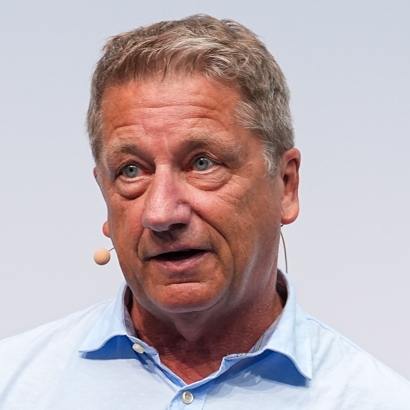
Prof. Dr. Mike Friedrichsen,
University of Digital Science, Potsdam, Brandenburg
Christoph Mühleib, SES Germany
From an aerial perspective – a story full of boundary crossings
„The hybrid use of audiovisual media, from linear TV to TikTok, has established itself as a solid standard,“ stated Christoph Mühleib, Managing Director of SES Germany, in his presentation. It is not a matter of either-or; broadcast and broadband simply coexist in households. On the path to a potential „All-IP distribution,“ one must question whether there is widespread coverage with sufficient bandwidth everywhere and whether a purely IP-based distribution of content to millions of households would be economically viable.
He also pointed out that „All-IP“ raises a number of legal questions, ranging from data protection concerning transparent viewers to regulatory scenarios regarding competition and competition law. This scenario would also intensify the discussion about who holds the power in the digital world. Content producers, broadcasters, platforms, network providers, national or global corporations? And in terms of customer relationships, it raises new questions regarding choice, freedom, or dependence on a provider.
From an ecological perspective, streaming linear programs is also problematic. According to studies, the internet already accounts for two to four percent of global CO2 emissions, and a significant portion of internet usage is attributed to streaming. Additionally, streaming of live programs currently accounts for less than 5 percent of video consumption.
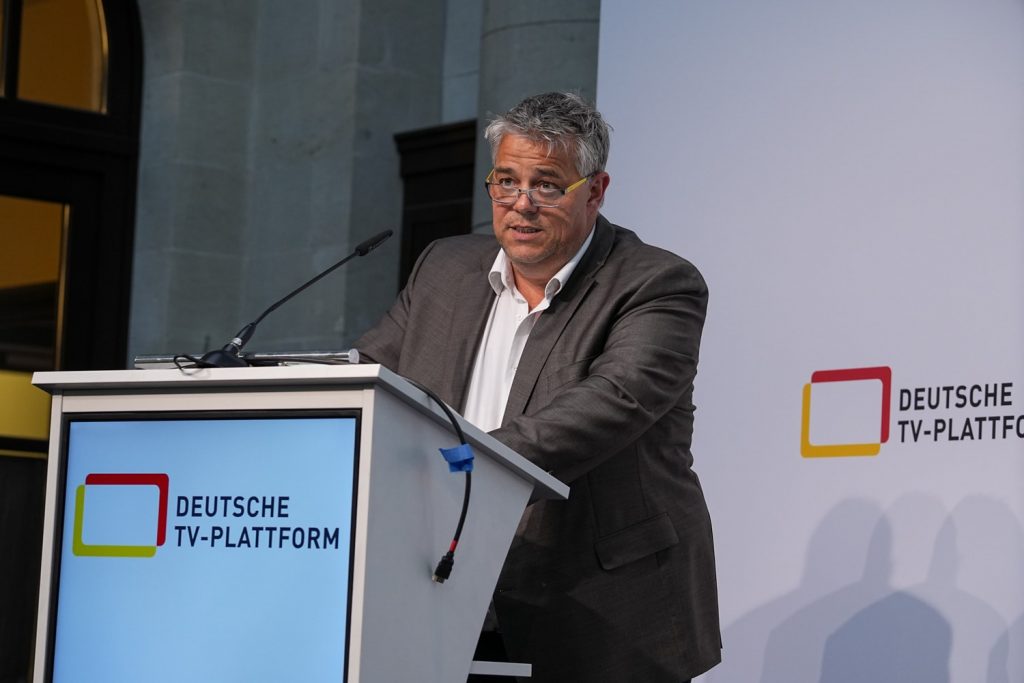
Christoph Mühleib, Managing Director SES Germany
„I believe it’s the mix that matters; I don’t see it as an either-or situation. Linear television via broadcast is diverse, simple, and of high quality. But viewers also naturally use media libraries. And all of this on various devices. That means people get the content they are interested in wherever they can find it. The source is actually not that important anymore. And then one has to decide which content fits with which network.“
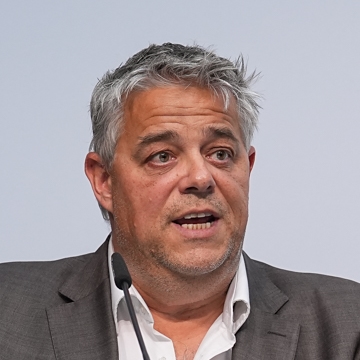
Christoph Mühleib, Managing Director SES Germany
Event Video
The day summarized in just under 5 minutes (German language)
Vincent Grivet, HbbTV Association
Navigating the Changing World of TV with HbbTV
„People still love television, especially on large TV sets,“ said Vincent Grivet, Chairman of HbbTV, in his presentation. While the use of streaming services is increasing, linear television still remains the top choice for viewers. Fifteen years after the launch of Netflix & Co., it is now evident that the growth of the streaming industry has its limitations. Moreover, the streaming industry faces several economic and energy policy challenges. He emphasized that revenues from ad-funded television and pay-TV, with significantly lower distribution costs, already exceed the projections for the streaming industry in the coming years.
From his perspective as well, there will be a future coexistence of broadcast and broadband. HbbTV is an ideal open standard for establishing corresponding services and business models across Europe without the need for complex technical adaptations to vertical app technologies or content agreements. The HbbTV Association provides specifications and tests that meet the needs of consumers, broadcasters, and manufacturers.
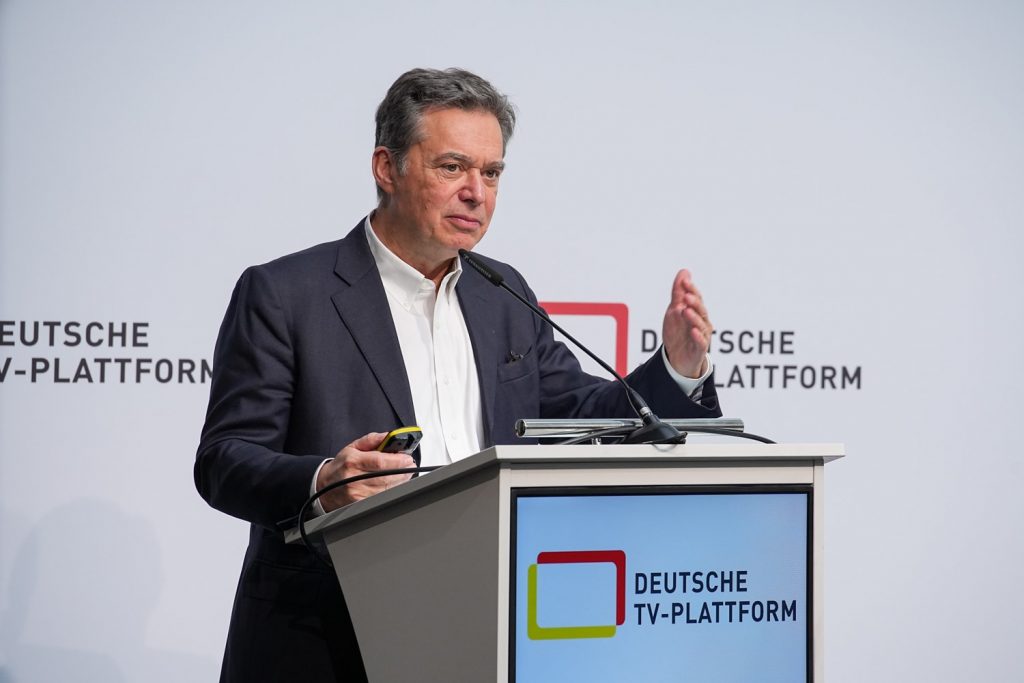
Vincent Grivet, Chairman HbbTV Association
„I believe that broadband will not replace broadcast. We are rather approaching a point of balance between both worlds. The broadcasting industry needs to find intelligent ways to organize this coexistence. The HbbTV standard can play an important role in supporting these models and enabling synergies. We also need to address the issue of sustainability, especially in streaming.“
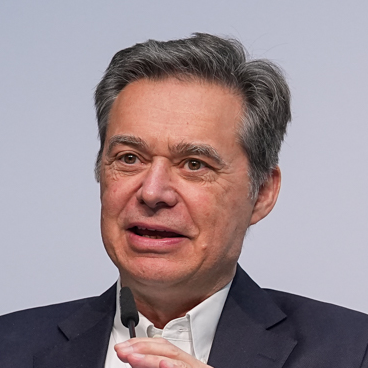
Vincent Grivet, Chairman HbbTV Association
Benjamin Rosenberg, BBC
A thirst for Digital First
„At the BBC, we believe that television is at the heart of a successful digital transition,“ said Benjamin Rosenberg, Head of Distribution at BBC. IP (Internet Protocol) is set to become the leading medium for transmission in the UK, with an estimated more than half of households exclusively using IP transmission by 2030. It is anticipated that access to radio and television will eventually be exclusively through the internet.
Therefore, the strategy is „digital first,“ prioritizing the growth of digital services. This involves focusing on products and bundling editorial offerings with online content. The BBC has set an ambitious goal of acquiring 46 million registered customers by 2027, which represents around 80 percent of the population. The BBC sees an IP future as a great opportunity to provide all viewers with access to high-quality, personalized services, without the capacity limitations of traditional broadcasting.
Currently, internal analysis is being conducted to determine the necessary steps for the BBC and others to transition to a purely internet-based future. One important aspect is digital exclusion. Approximately 10 million adults in the UK do not yet possess the digital skills to perform basic tasks such as logging in, opening various applications, or even connecting their devices to Wi-Fi.
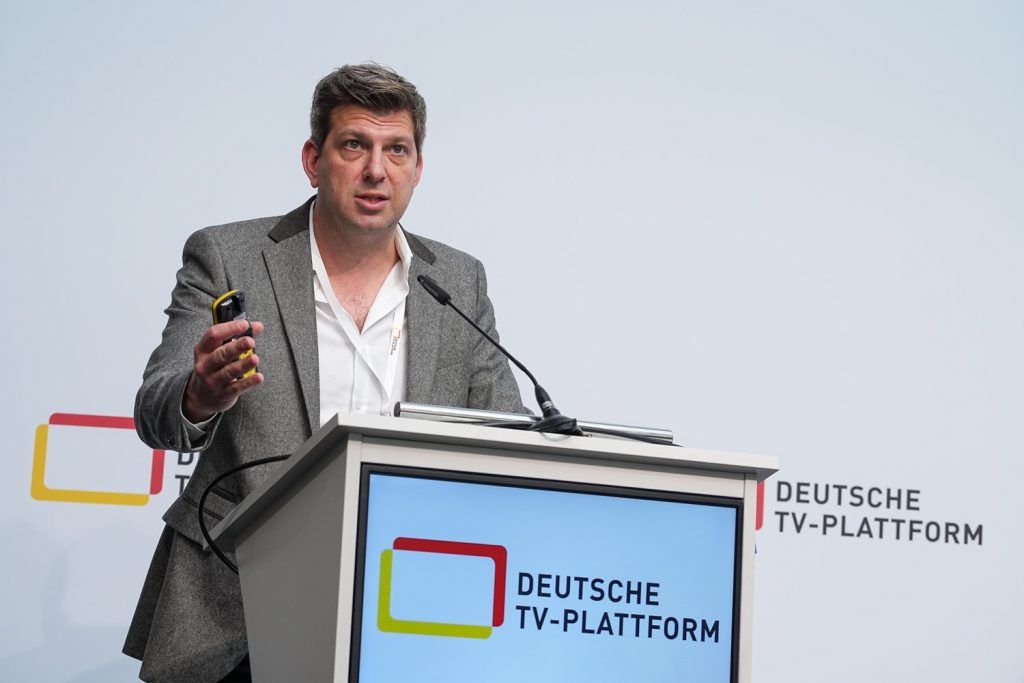
Benjamin Rosenberg, Head of Distribution, BBC
""Mini-Trade fair": Video of the Partner-Exhibition
Innovations at your fingertips: The Media Innovation Platform was accompanied by a „mini-trade show“ where our partners made the topics discussed at the conference come alive through demos:
DVB-I Pilot Project Germany: Demonstration of the DVB-I (I for Internet) standard, which provides TV-based services (linear TV, VoD) on reception devices with broadband access via the internet. The user experience is similar to receiving DVB services via DVB-T, DVB-S, or DVB-C.
Fraunhofer FOKUS: Demonstration of the HbbTV-TA standard, which enables targeted advertising and dynamic ad spot exchange, and demonstration of Media over QUIC – a new transmission protocol under development that allows for lower latencies and faster video startup times compared to TCP.
HD PLUS GmbH: Demonstration of the HbbTV Operator App, which provides the functionality of set-top boxes directly on the TV without external hardware.
Zattoo: Demonstration of linear TV streaming and FAST Channels – Free-Ad-Supported Streaming TV, which refers to free, ad-supported TV channels that can be received over the internet.
Bernhard Widtmann, AWS
Next Gen Live Streaming –
Opportunities & Challenges Shifting from Broadcast to Streaming
Bernhard Widtmann, Principal Industry Specialist for Media & Entertainment at Amazon Web Services (AWS), provided insights into the opportunities and challenges of the transition from broadcast to streaming. He demonstrated with examples that a significant shift in media distribution, such as the move of premium content from traditional broadcast to exclusive OTT streaming, can already result in at least consistent viewer numbers. For instance, the average viewership for the „NFL Thursday Night Football Game“ in the United States shifted from 13 million on Fox Sports to 13-15 million on Amazon Prime Video.
He emphasized the challenges associated with streaming such large live events. The transmission of NFL games on Amazon was prepared for over a year on the infrastructure side, leading to an increase in internet capacity in the US by approximately 40 percent. These massive traffic peaks posed a significant challenge for the entire industry. For example, the exclusive streaming of the 2022 World Cup final in France alone (with 29 million TV viewers on TF1) at an HD unicast bitrate of five megabits per second would have resulted in a theoretical total rate of 145 terabits per second – ten times the historical peak traffic ever recorded by the Frankfurt Internet Exchange (CIX). Addressing this problem would require close collaboration between internet service providers, platforms, and content providers. Merely continuously expanding server capacity is not a sustainable solution.
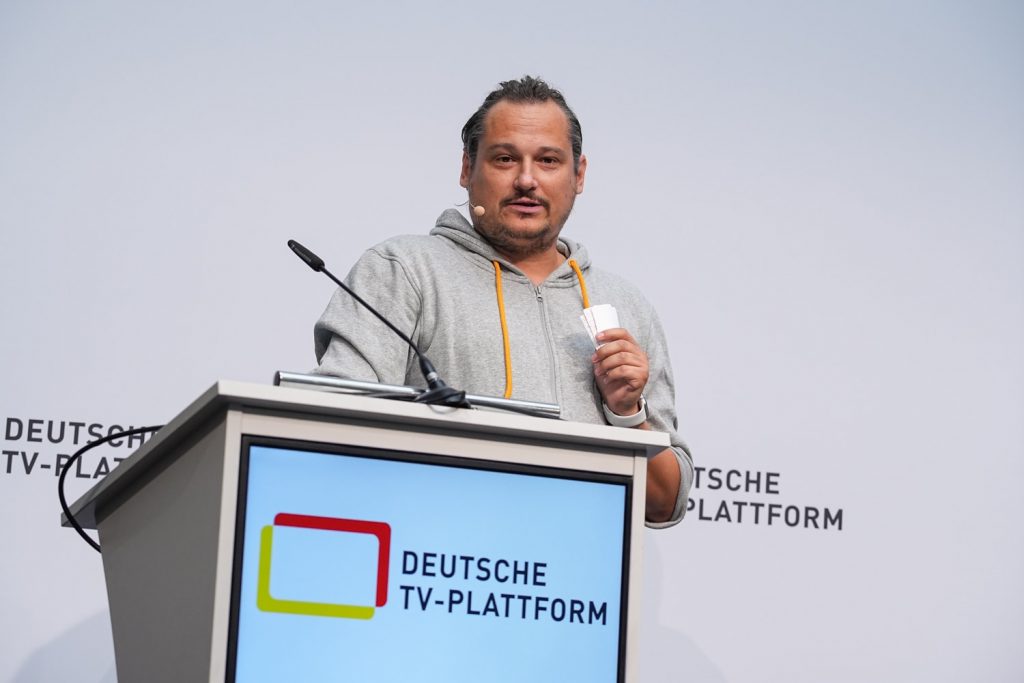
Bernhard Widtmann,
Principal Industry Specialist
Media & Entertainment, AWS
Dr. Stefan Arbanowski, Fraunhofer FOKUS
Key technologies, standards, tech trends: becoming increasingly complex, so that it remains beautifully simple.
What does it take nowadays to bring OTT and internet video to the streets? This question was addressed by Dr. Stefan Arbanowski, Director of Future Applications and Media at Fraunhofer FOKUS. He bridged the gap between the necessary key technologies and provided an outlook on new technologies and standards. Whether live or on-demand, it became evident how technologically complex the streaming world is, with its various formats, codecs, players, apps, and DRM systems for content distribution across different networks, platforms, and devices. Norms, standardization organizations, and industry forums would help to connect these technologies and accelerate developments.
HbbTV and the new standard DVB-I could serve as bridging technologies between broadcast and broadband, offering viewers the best of both worlds with excellent usability. In the case of DVB-I, this is achieved through the representation of traditional live TV, OTT, and VOD services in a user-friendly service list that can be operated like an EPG (Electronic Program Guide). He also mentioned new technologies such as Media over QUIC. This protocol has significantly lower latencies compared to TCP and allows for much quicker establishment of connections for video streaming over IP.
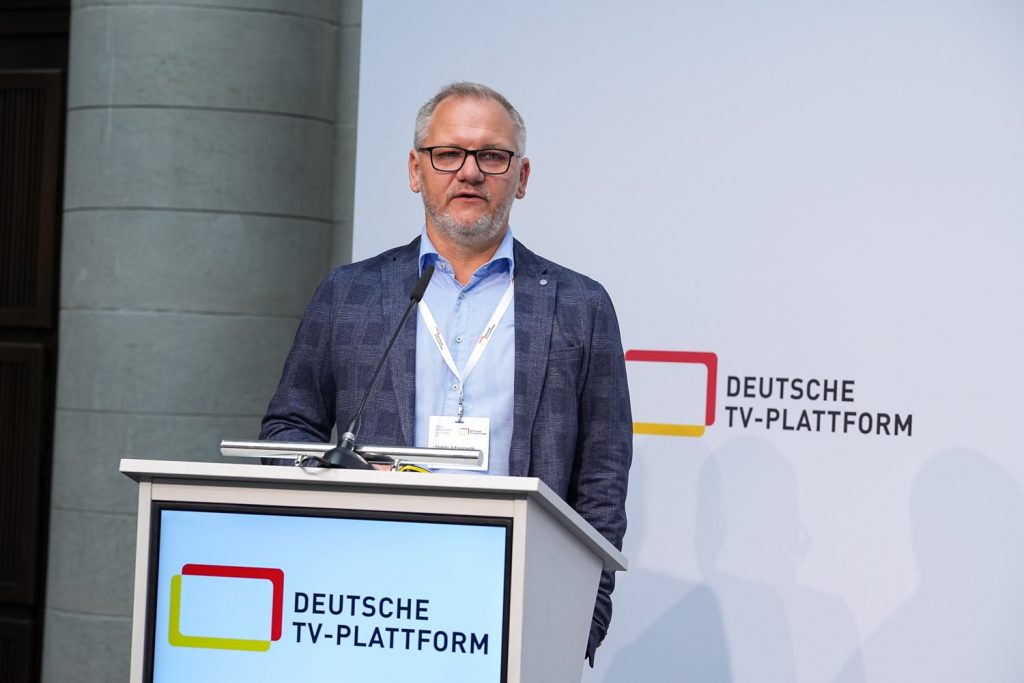
Dr. Stefan Arbanowski, Director Future Applications and Media Fraunhofer FOKUS
„In order to make the beautiful new media world easily usable for viewers, the industry is making enormous efforts. Standardization and harmonization of key technologies contribute to being able to offer media services in a future-proof and sustainable manner. Both the broadcast and broadband worlds are evolving and converging. The technological challenges increasingly lie in the complexity and scalability of the systems but also offer tremendous potential for innovation.“
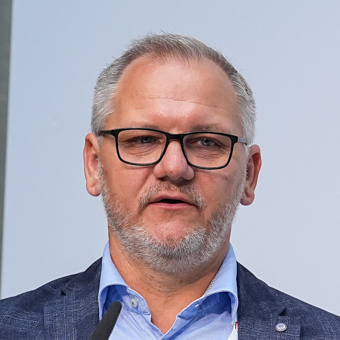
Dr. Stefan Arbanowski, Director Future Applications and Media Fraunhofer FOKUS
Expert talk
„The change in customer behavior is the central point that the industry must orient itself towards. What do our customers and different target groups want, and how can we help them find content? We need to have many discussions within the industry, just like today. Many needs can be better fulfilled through IP. Even for major live events such as a World Cup final, there will be technological solutions in the future. Therefore, I believe that the trend towards IP and unicast is unstoppable.“
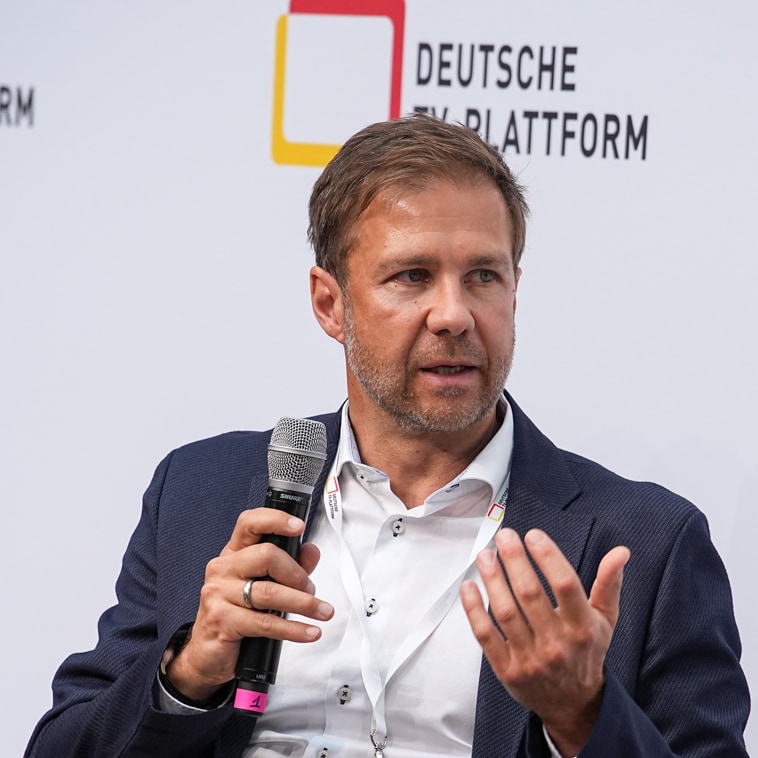
Joachim Abel,Vice President Product & Processes TV, Deutsche Telekom
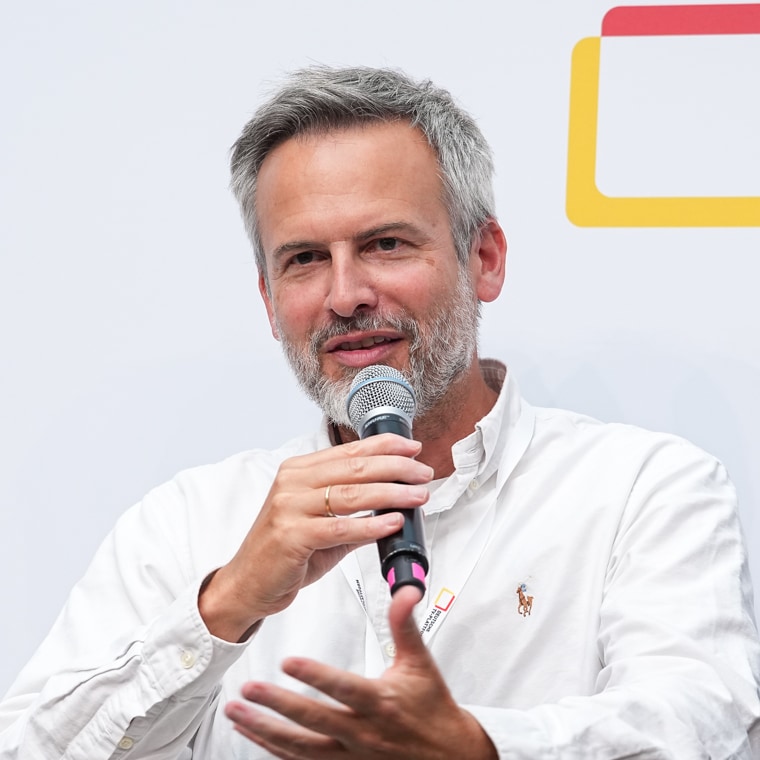
Dr. Niklas Brambring, CEO Zattoo
„Both go hand in hand, broadcast and broadband. The strengths of broadcast are the content and the experience of linear television. This needs to be transformed into the IP world and carried into the future, for example, through multi-screen and time-shifted usage. We are also intensively addressing these topics in the Media over IP working group of Deutsche TV-Plattform.“
„The Media Innovation Platform has demonstrated very well how important it is to consider all perspectives, from infrastructure to platforms to content houses. What I have heard today is a strong affirmation of our direction, which encompasses both broadcast and broadband. I believe it has become evident that both philosophies complement each other well. The broadband market is growing, but the linear live business remains very important for us as a public-service broadcaster.“
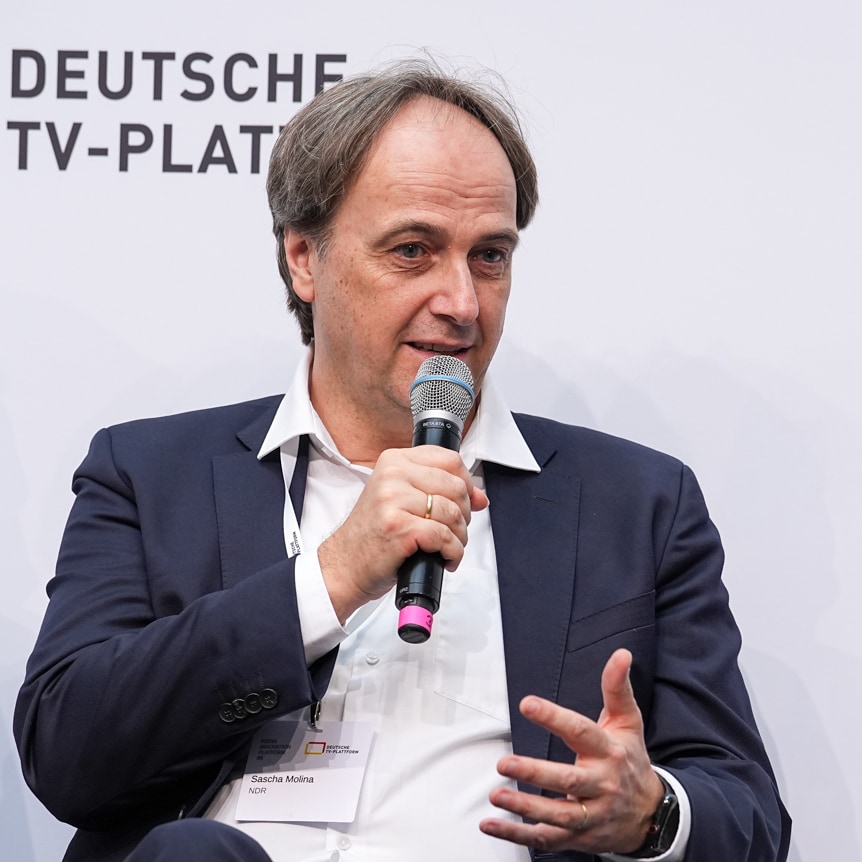
Sascha Molina, Produktionsdirektor NDR
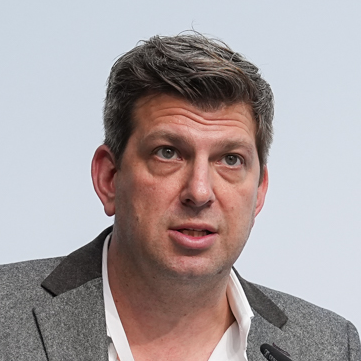
Benjamin Rosenberg, Head of Distribution, BBC
„I believe that broadcasting offers significant advantages as it covers markets extensively and creates many shared moments for viewers. However, we see the trends, and the numbers indicate that the majority of people will access television and audio services online in the future. We have not set a specific date, but we believe that there is a future in which all our content will be consumed via IP. It will be important to include everyone and avoid digital exclusion in this process.“
„I believe that we will already see a shift towards a certain point of coexistence between broadcast and broadband. It is important to establish business models that allow both technologies to be used on equal terms. And then, we also need to address the topic of sustainability.“
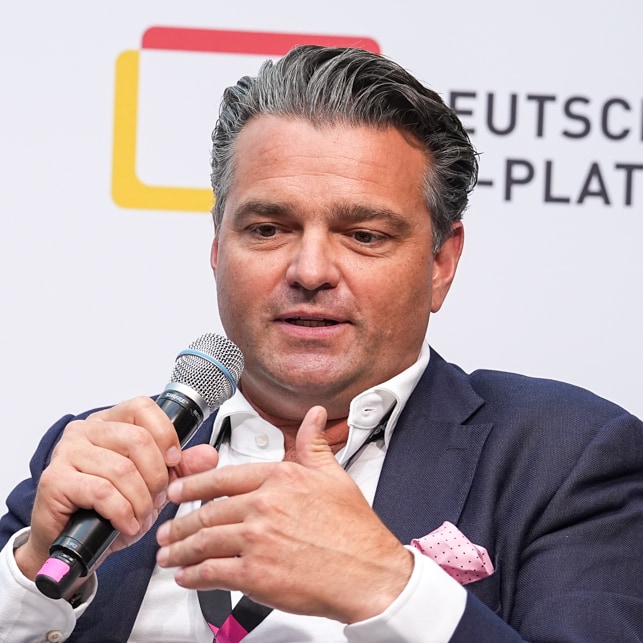
Philipp Rotermund, CEO Video Solutions
